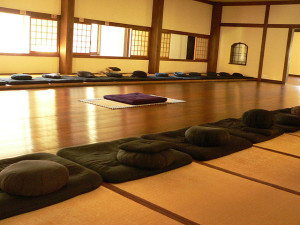
Introducing this Guide
One of the most common questions I get revolves around meditation retreats. My short answer is that I think they’re extremely powerful, and I highly recommend them!
This guide will offer practical advice on meditation retreats, as well as where to actually go.
As I’m based out of Portland, Oregon in the USA, there will be a section for local meditators of retreats from all Buddhist lineages. However, for the rest of the United States, Europe, Asia, and beyond, I will explicitly stick to my tradition: Theravada Buddhism / Vipassana / Insight Meditation.
Table of Contents
Why Go on a Meditation Retreat?
I had practiced meditation & yoga on and off for several years before my first retreat. It always helped me to feel a little more relaxed, and on some deeper level, I also “knew it was good for me.” However, I was most half-hearted in how much I brought it into my real life.
And then came my first meditation retreat.
It was a 10-day Vipassana retreat, held in silence with around 10 hours a day of formal meditation, and no reading, writing, or screens.
Whoa!
It was such a profound dive inwards, and I learned things about my patterns of thinking, emoting and identification that I had never before seen. It was like an archeological dig into layer after layer of who I was & what was possible for a human mind. Even though I’ve never been much of a crier, I was so broken open that on the final day, tears of joy streamed down my face for hours.
It didn’t stop there.
When I returned back home, I noticed that in my daily interactions, I was noticeably less reactive and more capable of actually living my deeper truths. This happened in my core relationships, but also in interactions as simple as being more patient with tech support people, more present with cashiers, and more understanding of other drivers on the road.
Even though I had already been meditating for a few years, it didn’t feel like my meditation practice truly began until that first retreat.
Likewise, I’ve talked with hundreds of other long-time meditators who have expressed something very similar — the container and intensity of a retreat just lets us go so much deeper than we ever could in daily life.
Bringing all this together, if you’re serious about learning what meditation or Buddhism has to offer, going on a retreat and deepening your meditation practice is easily one of the most powerful things you can do.
Highly recommended!
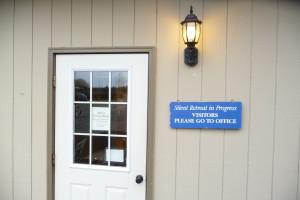 Six Things To Consider When Deciding On A Meditation Retreat
Six Things To Consider When Deciding On A Meditation Retreat
1) Cost. Some retreat centers are very expensive, while others are low-cost or completely donation-based.
My experience is that the cost isn’t really an indicator of the quality of the retreat. However, it is probably correlated with having more comfortable conditions or being led by more well-known teachers, but neither of those are necessarily an advantage.
In other words, don’t read too much into the cost, or worry about being able to afford or find the right spot. Any of the places on this list, from donation-based to affordable to expensive are all perfectly good places to do a retreat. And if funds are an issue, know that many places have scholarship options.
2) Location. Are you willing to fly around the world? Or how about just across the country? For some people, it’s totally worth it to find the right fit. For others, it’s mostly just the opportunity to dive inward. Both are equally valid. Chances are there’s some center near you that won’t require a plane ride. If it’s not on the list below, google your location and “insight meditation” together, and see where the rabbit hole leads you.
3) Duration. I generally advise spending at least 4 days/5 nights on one’s first retreat (but not more than 10 days/11 nights). The first 2 or 3 days are often just getting acclimated, and it’s nice to taste that deeper drop-in for at least a couple of days. Once you’ve done a handful of 6-14 night retreats, it can be very powerful to jump to a 1-3 month retreat.
Of course, you’ll still benefit even if you can only do a weekend, but the more time you have, the deeper you can go.
4) Silence. Is the retreat held in “noble silence” or is it more of a social thing? Both have their benefits, but if you’re interested in diving deeper and finding inner freedom, you’ll find silence to be an enormous benefit.
5) Teachers. The more intense the retreat, the more important it is to have a good/resonant teacher. This is especially true for longer retreats.
I generally look for someone who is connected with a reputable tradition, and isn’t a self-appointed guru with no teacher or lineage to cross-reference. Also, while it’s not always possible, it’s great if they’re local or if there’s some way you can stay in contact with them once the retreat is over.
On the retreat itself, it’s nice when you can actually get individual attention from the teacher, even if that’s just a group interview every couple of days. Until you have a really established practice, I’d stay away from retreats where there’s no actual contact with the teacher—like ones with “famous” teachers that fit 500 people into a big room.
Also, before going on retreat, it can really help to familiarize yourself with that teacher’s approach. Perhaps read one of their books (if they have one). See if you can find a talk by them or some articles online. Find out if their message speaks to you. This is generally less important if they are strongly connected to a particular tradition, and more important if they are independent.
6) Teachings. There are numerous different meditative traditions that offer retreats. Early on, I explored retreats in Yoga, Zen, and Vipassana. It can be an essential part of the journey to try different things out, but eventually, it’s really helpful to find one and go deeper into that. Similar to what I said in “teachers,” just look for something about a certain tradition that resonates with you and follow your intuition!
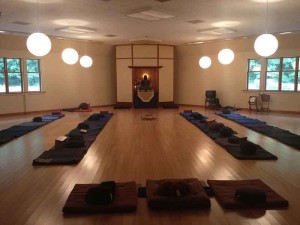
Retreats in the United States
Here I will only be talking about the Vipassana / Theravada / Insight Meditation tradition. As a historical backdrop, this tradition is widespread in Southeast Asia, and began entering the United States in the 1970s. It’s tough to divide it up precisely, but there are basically four major streams that have brought this tradition to the United States.
Insight Meditation
In 1975, the Insight Meditation Society was formed in Barre, Massachusetts. It has since opened up a sister branch called Spirit Rock near San Francisco, California. These two centers were founded by people who logged many years of intensive practice at monasteries in Asia.
These two retreat centers run retreats throughout the year, offer an annual long retreat (1-3 months), and in general, have some of the highest quality instruction available. However, they are unfortunately also some of the most expensive.
Also in this stream, are the following excellent retreat centers, organized by region:
Western United States
- Insight Retreat Center, in Santa Cruz, California, offers a full retreat schedule across the year. It’s my overall top recommendation for Insight Meditation retreats in the USA. They are completely donation-based.
- Big Bear Retreat Center near Los Angeles, California.
- Vallecitos Mountain Retreat Center in Durango, Colorado.
- The Rocky Mountain Eco Dharma Retreat near Boulder, Colorado. They offer many retreats from a variety of traditions, though the ones I would highlight are from The Insight Meditation Community of Colorado.
- Mountain Hermitage in Taos, New Mexico.
- Dharma Zephyr in Nevada.
- Cloud Mountain Retreat Center between Portland and Seattle. This is my favorite spot in the Pacific Northwest.
- Bellingham Insight in Southwestern Washington. They lead a few week-long retreats each year.
- Vipassana Metta in Maui, Hawaii. They generally don’t lead retreats, but are available for experienced practitioners to engage in independent practice for as little or as long as they like. A teacher is usually present.
- Dharma Treasure near Tuscon, Arizona. They focus on samadhi/jhana retreats in the style of The Mind Illuminated, though one can also do a longer personal retreat with teacher support.
Eastern United States
- The Forest Refuge in Massachusets. Located on the same property as the Insight Meditation Society, this center offers excellent conditions & instruction for lightly guided, longer-term meditation practice, like one month or more. I’m told they are generous about scholarships.
- Barre Center for Buddhist Studies in Massachusets. Also located on the same property as the Insight Meditation Society, they have a full retreat schedule. Compared to IMS, it has a little more Buddhist and/or theme-oriented retreats, as opposed to IMS, which is more explicitly meditative.
- Dhamma Sukkha Meditation Center in Missouri. Offers donation-based, small-group meditation retreats with excellent teachers. The primary practice for all their retreats is Mettā Meditation (to develop the jhanas) and Tranquil Wisdom Insight Meditation (to attain awakening). All based on the suttas. They also lead regular online retreats.
- Southern Dharma Retreat Center in North Carolina. A full roster of retreats, including an annual month-long.
- Orlando Insight Meditation Group. Hosts retreats infrequently, but worth knowing about for Florida residents.
Central United States
- Twin Cities Vipassana Collective & the Common Ground Meditation Center near Minneapolis, Minnesota (the latter is donation-based!).
- Tri-State Dharma on the border of Kentucky, Indiana, and Ohio.
- Kevala Retreat in Southwestern Wisconsin. They don’t offer curated retreats, but are well set up for independent practice, and depending on when you come, potentially teacher guidance.
- Insight Chicago Meditation Community near Chicago. Hosts retreats infrequently, but worth knowing about for Chicago-area residents.
Traditional Monasteries
The Theravada Buddhist tradition is kept alive most strongly in Myanmar, Sri Lanka, and Thailand (also in Laos and Cambodia). All of the following monasteries are from lineages based in those countries, and have a full collection of fully ordained monks. Generally, you’re not so much going on a curated retreat, but instead get to participate in the daily rhythm of the monastery, which is usually filled with spaciousness and plenty of time for meditation.
- Metta Forest Monastery – San Diego, run by Thanissaro Bhikkhu, one of the foremost scholar-practitioner monks around today. Thai Forest Tradition.
- Abhayagiri Forest Monastery – Northern California, an Ajahn Chah lineage monastery. Thai Forest tradition.
- Temple Forest Monastery – New Hampshire, an Ajahn Chah lineage monastery. Thai Forest tradition.
- Forest Dhamma Monastery – Virginia, a Maha Boowa lineage monastery. Thai Forest tradition.
- Bhavana Society – Virginia, run by Bhante Gunaratana, the author of Mindfulness in Plain English. They do offer many curated retreats across the year. Sri Lankan tradition.
- Bodhi Monastery – New Jersey, they host curated retreats a couple of times a year, though I’m not sure if you can stay there at other times.
- Tathagata Meditation Center in San Jose, California. This is a Burmese, Mahasi-style Monastery. This means you are always in retreat mode, practicing a very intense style of meditation from 5am to 10pm.
- Chanmyay Satipatthana Vihara in Illinois. Another Burmese, Mahasi-style Monastery with an intense schedule.
S.N. Goenka 10 Day Vipassana Courses
S.N. Goenka was a wealthy Burmese man who devoted his life to teaching Vipassana meditation far and wide. He is likely the single individual most responsible for the spread of Vipassana / Mindfulness across the globe. The retreats are the same every time, everywhere. All the talks and instructions are given via recording from Mr. Goenka.
On these retreats, you will know exactly what to do. The container is powerful and set up for an authentic meditation experience. In that sense, they are well-suited for beginners. On the other hand, you generally won’t get much help from the “assistant teachers” (the “teacher” is S.N. Goenka who is only on recording), and the approach is somewhat rigid and dogmatic.
All in all, it’s not perfect, but it’s a powerful experience. I’ve done many of these, and while I generally give them the thumbs up when people are excited about doing them, I also usually suggest trying other options first, if they are available.
There are currently 199 Goenka retreat centers across the globe, including 12 in the United States: four in California, as well as one in Washington, Illinois, Wisconsin, Idaho, Texas, Georgia, Delaware, and Massachusetts.
Independent Teachers
There are a number of teachers who don’t neatly fit into any of the above boxes, but are well respected and lead their own retreats. A few examples include:
- Shinzen Young offers excellent retreats in Arizona, California and Ontario – great for those intellectually/analytically inclined who want a deep meditation experience.
- Mark Coleman leads wilderness Vipassana retreats (for those near Portland, Justin Michaelson does something similar)
- Beth Upton (across USA and Europe), Shaila Catherine (MI, GA, and CA), Leigh Brasington (all over world), Delson Armstrong (MO, CA, Europe, etc.), Susie Harrington (USA, Canada, Bhutan) and others.
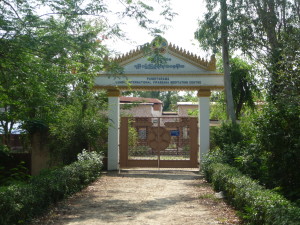 Retreats in Asia
Retreats in Asia
Note: Asia in general and Myanmar specifically is not for the faint of heart—it’s noisy, the food isn’t so great, the weather is intense, mosquitos can be quite a bother and it’s far away.
That being said, if you can brave it, you will be rewarded with high-quality instruction at a very low cost (all these centers are donation-based). There’s also something really special about being not just in a retreat center, but in a country that is highly supportive of meditation. I usually recommend initially going for two weeks to three months.
As in the previous section, these are only Theravada / Vipassana / Insight Meditation Centers
Myanmar
Note: as of September 2024, Myanmar continues to be amidst an ongoing civil war. Some centers don’t accept foreigners at all. While others may allow you to come, understand that you are taking a major safety risk. I recommend looking to another county.
1) Shwe Oo Min Meditation Center. This is where I’ve done the core of my training—I couldn’t recommend it highly enough. Though, make sure to go when Sayadaw U Tejaniya is there (usually Dec – Feb, and July – Oct), and do yourself a favor by reading at least one of his books beforehand. If you stay longer than three months, you can stay at some of his affiliated centers for more solitary practice, like Dhamma Vibhajja down the block, or Shwe Oo Min Kalaw.
2) The Pa Auk Monastery in Pyin Oo Lwin. This is likely the best place in Myanmar for foreigners to engage in samatha / jhana practice. It’s a rigorous approach to jhana that not everyone can access, but if you’re going to try it in Myanmar, this is the spot. Note: I am NOT recommending the main Pa Auk Monastery in Mawlamyine – my experience there was that it was a big social fest, and not an environment conducive to the kind of sincere practice and tranquility needed for samatha.
3) Mahasi Method in Myanmar. The best options are the Panditarama Hse Mine Gon Forest Center, or the Chanmyay Yeiktha in Hmawbi, though personally, I’d probably go to Panditarama Lumbini or Nissarana Vanaya in Sri Lanka before these.
4) Places for independent practice in Myanmar.
- The Mahasi center in Kalaw will give you a nice Kuti, the weather is pretty nice, and since no one speaks very good English, they will let you do whatever practice you want. You won’t be able to contact them ahead of time, so just show up. I think you’d be okay here with a tourist visa, but to be sure, I’d apply to the Yangon Mahasi Center for your sponsorship letter…
- Take a bus to Sagaing, and find your way to Parakamma East, where the abbot speaks very broken English and will likely let you stay in their cave, or their accommodations! Note: Sagaing has been heavily bombed during the civil war, so I don’t know if this monastery is still an option.
Thailand
Of all the countries in the region, Thailand seems to have the most options, so below is far from an exhaustive list, but it’s a good starting point.
The following are all “group retreats,” with a set start and end date, and regular teachings, similar to what you find abroad. Great for people who don’t have an established practice.
1) Wat Suan Mokkh. On the 1st of each month, they lead a 10-day meditation retreat. You are welcome to stay the rest of the month and do self-practice. This center was founded in 1989 by Ajahn Buddhadasa, one of the foremost teachers of the 20th Century (who is now deceased). The primary method is mindfulness of breathing. Dipabhāvan is another retreat center in the same lineage that offers regular 3 and 7-day retreats.
2) Indriya retreats. Led by a Westerner who formally spent 10 years as a monk and has done an impressive amount of retreat time. They offer regular 10-day retreats, and occasionally, longer ones as well.
3) Wat Tham Doi Ton. This monastery leads monthly 5-day retreats. Formally, they had an English translator present for the retreats, and also several foreigners staying long-term for mostly independent practice. It’s unclear if this is still the case. There are some inspiring caves on site!
4) Wat Ram Poeng & Doi Suthep both have intensive retreats of 21 & 26 days respectively. These are in the Ajahn Tong tradition; more similar to Mahasi than Thai Forest. Clear guidance & instruction, and a very serious schedule.
The following are not retreats, but monasteries that let lay people come and plug into the rhythm of the monastery. With the exception of the 1st option, these are best for people with an established practice, as you won’t get a lot of instruction.
1) Wat Sopharam. This monastery is a good option for people without an established practice, as it has good resources for foreigners, including a daily dhamma/meditation class in English and the ability to meet with the teacher. First time stays are between 5 and 21 days.
2) Wat Boonyawad. This is the home of Ajahn Dtun, who is one of the most respected meditation masters alive. The conditions are set up for serious meditation practice. Expect no frills. Unfortunately, you won’t have much access to the teacher, as he doesn’t do much in English or with a translator. There is a limit on how long you can stay, though check the website for the current limit.
3) Wat Marp Jan. This is the home of Ajahn Anan, another one of the most respected meditation masters alive. The schedule here will have less meditation time, and more chores and communal activities. Ajahn Chah lineage.
4) Wat Phu Khong Tong. This is the home of Ajahn Martin, a European monk who speaks fluent English and is a student of Ajahn Maha Boowa. There’s lots of access to the teacher and a small forest environment with an emphasis on serious meditation practice. No frills. Note the tradition is quite intense, with an emphasis on strong concentration via buddho or anapana, and then asubha practice. You can stay up to three weeks on arrival, and then indefinitely upon request.
5) Wat Pah Nanachat. The Ajahn Chah International Branch Monastery. While it is the most famous Thai monastery for foreigners, basically everyone I know who has been here has said there are better places to practice; i.e. places that are less busy, have more access to teachers/instructions, or a more serious meditation environment. I only include it here because everyone seems to want to go here, but there are better options!
Elsewhere in Asia
Malaysia
1) Sasanarakkha Buddhist Sanctuary. They have group retreats offered by deeply experienced teachers, both lay and monastic. You can also do a “guided retreat,” which is conducted on your own but with regular practice check-ins with a resident teacher, or a “self-retreat,” where you’re completely on your own.
For men, there is also an option to stay with the monks. Regardless of gender, you are able to schedule an interview with one of the senior monks (you have to ask, but it’s very helpful!).
Nepal
1) Lumbini Panditarama. This is one of the best Mahasi-style meditation centers on the globe for longer practice. There are two teachers; both speak perfect English and go much deeper than rote instructions (which is far too common at Mahasi centers in Asia). You will have your own private hut with a bathroom, and the food is pretty solid. You’ll get private interviews at least every other day, if not every day.
Sri Lanka
1) Nissarana Vanaya. I haven’t been here but have received high recommendations. Serious practice environment. The teacher, food, solitude, and general conditions all seem high. They offer both meditation retreats and self-directed practice with daily teacher interviews. Officially, you can stay up to three months, though probably longer if you are serious. The style of practice is traditional Mahasi method.
2) Na Uyana Aranya. I also haven’t been here, but it’s supposed to be a very good jhana/samadhi focused center. There’s lots of quiet and solitude, good food, and quality instruction. A proper forest monastery. You can stay as long as you like.
3) An incredibly thorough 40-page document prepared in 2018 by a Buddhist monk. It lists dozens of monasteries in Sri Lanka, with lots of great info for foreigners on visiting Sri Lankan monasteries.
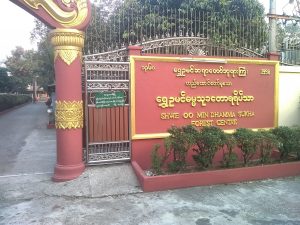
Retreats in Europe, Canada, Mexico, and Beyond
Europe
Personally, I’ve never been on a retreat in Europe, so I can’t speak too much about the particular centers. However, the general style of practice & options is going to be very similar to what I described in the United States section. All of the following are pretty solid choices:
- Gaia House, Devon, UK
- Vipassanagruppen, Stockholm, Sweden
- Northern Light Vipassana Society, Sweden
- Skogskloster Buddhistsamfunn, Norway
- Vimalakirti Center, Geneva, Switzerland
- Meditation Center Beatenberg, Switzerland
- Nirodha: Insight Meditation Retreat Center, Finland
- Pauenhof Center, Germany
- Goenka retreats Europe, 19 Retreat Centers all across Europe. See the description on Goenka retreats in the USA section.
- There are eight different Ajahn Chah branch monasteries across the UK, Italy, Portugal, and Switzerland.
Canada
- True North Insight in Ontario and Quebec. They hold retreats in both English and French.
- British Columbia Insight Meditation Society (BCIMS) in British Columbia.
- Three Ajahn Chah Monasteries:
- Tisarana Monastery in Ontario.
- Birken Forest Monastery in British Columbia.
- Arrow River Forest Hermitage in Ontario.
- Five Goenka Retreat Centers in Alberta, British Columbia, Ontario, and Quebec. See the comments I made at the beginning about Goenka retreats.
Mexico
- Dhamma Vihara in Vera Cruz. This is a monastery that holds retreats and also allows you to stay and plug into the normal, daily rhythm.
- A Goenka Retreat Center about two hours from Mexico City. See the comment I made at the beginning about Goenka retreats.
South Africa
Brazil
- Wat Suddhavari, an Ajahn Chah branch Monastery
- Casa de Dharma
- Vipassana Meditation society
- Buddhist Society of Brazil
Australia
- Jhana Grove Retreat Center near Perth. Some retreats here are organized by the Perth Insight Meditation Group, and others by the Buddhist Society of Western Australia, which organizes retreats led by nearby monastics.
- Dhammasara Monastery for nuns / women, and Bodhinyana Monastery for monks / men.
- Blue Mountains Insight Meditation Center near Sydney.
- Patrick Kearney leads retreats across Australia and is an excellent teacher.
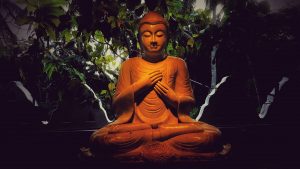
Long Retreats of One Month or More
Some of the below will be repeats from above, but I want to highlight everywhere I’m familiar with that is conducive to intensive retreat of one month or more.
A typical group retreat, with a set start and end point, a community, a teacher, etc.:
- Southern Dharma has a month-long retreat in winter
- Spirit Rock has a 1 and 2-month retreat in winter
- Gaia House in Europe has a 1-month retreat in November
- IMS has a 6-week and 3-month retreat in autumn
- Boundless Refuge has a 3-month retreat in spring, combining Zen and Vipassana
Places where it’s a little more self-guided, but with teacher support:
- SBS in Malaysia, see “guided retreat” (dana-based)
- Kevala Park in Wisconsin (dana-based)
- The Forest Refuge in Massachusetts
- Vipassana Metta in Hawaii
- Dharma Treasure in Arizona (an emphasis on anapana-based jhana practice)
Theravada monasteries w/ work practice & not in noble silence, but still a serious meditative environment:
- Nearly all the US-based monasteries I listed earlier could work, but I would put Metta Forest Monastery on the top of the list.
- Various Ajahn Chah-branch monasteries in the US, Brazil, India, and all over Europe.
Theravada monasteries in Asia w/ no work practice:
- Panditaramas for Mahasi practice all across the globe, though Lumbini, Nepal is probably the best option. Also good for long-term Mahasi practice is Nissarana Vanaya in Sri Lanka.
- Wat Phu Khong Tong w/ Ajahn Martin in Thailand (Ajahn Maha Boowa / Ajahn Mun lineage).
- Pa Auk branch monasteries all over the world; Na Uyana in Sri Lanka comes particularly highly recommended.
- Once the civil war ends, all the options I listed above for Myanmar
Retreats near Portland, Oregon
In another article, I’ve listed every Buddhist meditation group in the Portland area. All the locations on this list are also discussed in that link.
1. Retreat Centers that lead 10+ retreats per year within 90 miles of Portland
- Cloud Mountain – easily my top recommendation in the area. They offer Vipassana retreats from 2 – 30 days with some of the most senior Vipassana teachers in the country. High quality instruction. The retreats aren’t free but they are pretty affordable compared to similar centers.
- Northwest Vipassana Center – offers donation-based 10-day Vipassana retreats in the style of S.N. Goenka. The style is a little rigid, though you get an authentic meditation experience that’s affordable to all. These retreats are a great option.
- The Great Vow Zen Monastery – offers monthly Zen retreats, plus opportunities for long-term residential practice. If you’re into Zen, this is easily my top recommendation in the area.
2. Communities that lead 1 to 9 retreats per year within 90 miles of Portland
- Vipassana: Portland Insight Meditation Center, and Nature’s Heart Retreats (offers Wilderness Retreats)
- Zen: Mount Adams Zen Buddhist Temple, Dharma Rain Zen Center & No Rank Zendo
- Vajrayana: Dorje Ling (affiliated with a retreat center near Ashland that does more retreats) & Kagyu Changchub Chuling
- Non-Buddhist places that occasionally lead Buddhist retreats: Breitenbush Hot Springs
……………….
Feel free to leave any questions in the comments, or if you have some centers to add, I invite you to list them as well!

The centers you have listed in Thailand, Doi Suthep Insight Meditation Center, or Wat Ram Poeng are Ajahn Tong centers.
I personally would not qualify Tong centers as Mahasi style, perhaps you where being simplistic in order to reduce confusion. Nonetheless, the techniques are different enough that on-cushion experiences are different. As such, from a personal experiential perspective they are completely different.
To top it off the other Mahasi centers (say Panditarama) do not consider Tong to be a Mahasi practice, but rather a Tong practice.
Thank you, Leonardo! I changed the article to reflect this 🙂
There’s also https://mtadamsbuddhisttemple.org/ in Trout Lake, WA. I’ve been to many retreats there, and it’s a gorgeous place right at the base of Mt. Adams.
Do you know of a site that lists all meditation retreats by date?
Thank you
Hello Ann, there is not any site like this — part of why I wrote this article is that there are hardly any places online you can find multiple retreats centers listed, let alone organized by date, teacher, region, or topic!
What a great initiative! So happy to have come across this 🙂
Thank you so much for sharing this! There is much to explore in this article and I would love to try many of these retreats. I started my meditation journey over a year ago and it’s changed my life.